A breakfast friend par excellence, the French croissant is a gastronomic symbol of France abroad. Indeed, for nearly 200 years, the croissant from France has become a true tradition of French breakfast. A French icon along with the Eiffel Tower, the Tricolour and beret as a French icon.
This true French delicacy is loved in all its forms: plain croissant, chocolate croissant (“pain au chocolat” in France), almond croissant, ham and cheese croissant and more…
Let’s start by finding out about the origins of the French croissant, before giving you some great tips for where to find the best croissants in Paris!
The origins of the French croissant: a formidable story!
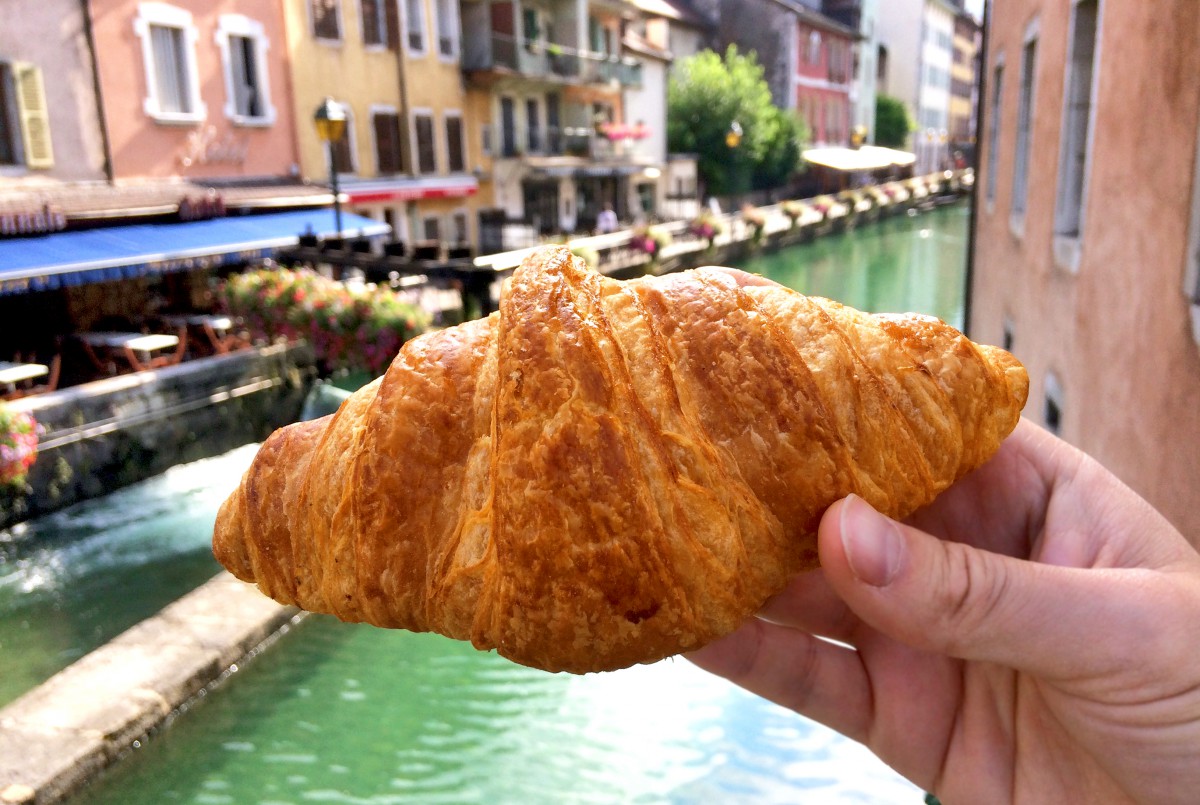
The idea of researching the croissant came to me in June 2011 when one of our French students asked me the meaning of the French verb “croître” (to grow).
While explaining this word in French, I wrote on the board another word using the same root: “la croissance“. Immediately, the man pointed out: “then it’s like ‘croissant’!“.
One thing leads to another, we went a little bit further and came to talk about the moon crescent (le croissant de lune), of similar shape to our yummy croissants.
“But then, this is like the crescent that is displayed on some of the Arab flags?” asked the student. Oui bien sûr I replied – but then why?
By researching on the Internet (and in a good etymological dictionary), I came across a historical anecdote about our French croissant… And to be honest, it was kind of devastating for it told me that the croissant did not have its origins in France!

The French croissant is not that French at all!
There are in fact two legends about its creation.
First is the story reporting that the Turks invented the croissant during the siege of Istanbul in the 16th century.
A second legend – arguably more glamorous – came from Vienna in Austria. In order to celebrate the defeat of the Turkish army at the siege of the Austrian capital in 1683, the Viennese bakers came up with a brioche in the shape of a crescent (which was part of the enemies’ flag) to take a bite out of them!
This explains why we still use in French the word “viennoiseries” (or Viennese pastries) to refer to all sorts of croissants, brioches, pains au chocolat, apple turnovers, butter pastries and other breakfast delicacies of the kind.
Many sources report that the first croissants to be sold in France were at 92, rue de Richelieu in Paris from 1837 to 1839. This is where Austrian bakers August Zang and Ernest Schwarzer opened a Viennese bakery.
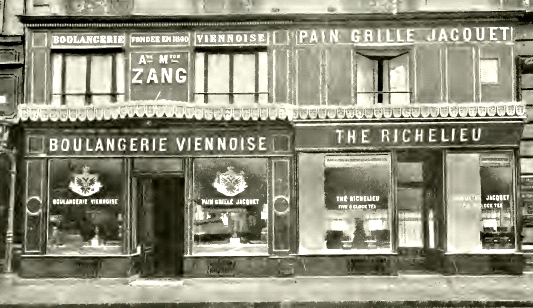
And it’s not an Austrian cliché!
You may ask why the croissant became so French. And why it is not an Austrian cliché?
The answer is quite simple. Towards the end of the 19th century, French bakers replaced the brioche dough with puff pastry. By not changing the particular crescent shape of the croissant, this transformation inevitably altered its taste. The new croissant was a huge success and has remained until now a typical French indulgence.
Back then, the French bakers made the French croissant in different shapes and fillings:
- the croissant au beurre (with butter – a lot of butter!),
- the ordinary croissant nature (with margarine),
- the croissant au chocolat (which is not found in Australia: it is a real croissant filled with chocolate and sometimes an icing-sugar coating),
- the croissant aux amandes (almond croissant),
- the rich croissant aux chocolat et amandes (almond and chocolate croissant),
- the savery croissant jambon-fromage (ham and cheese croissant)
- etc.
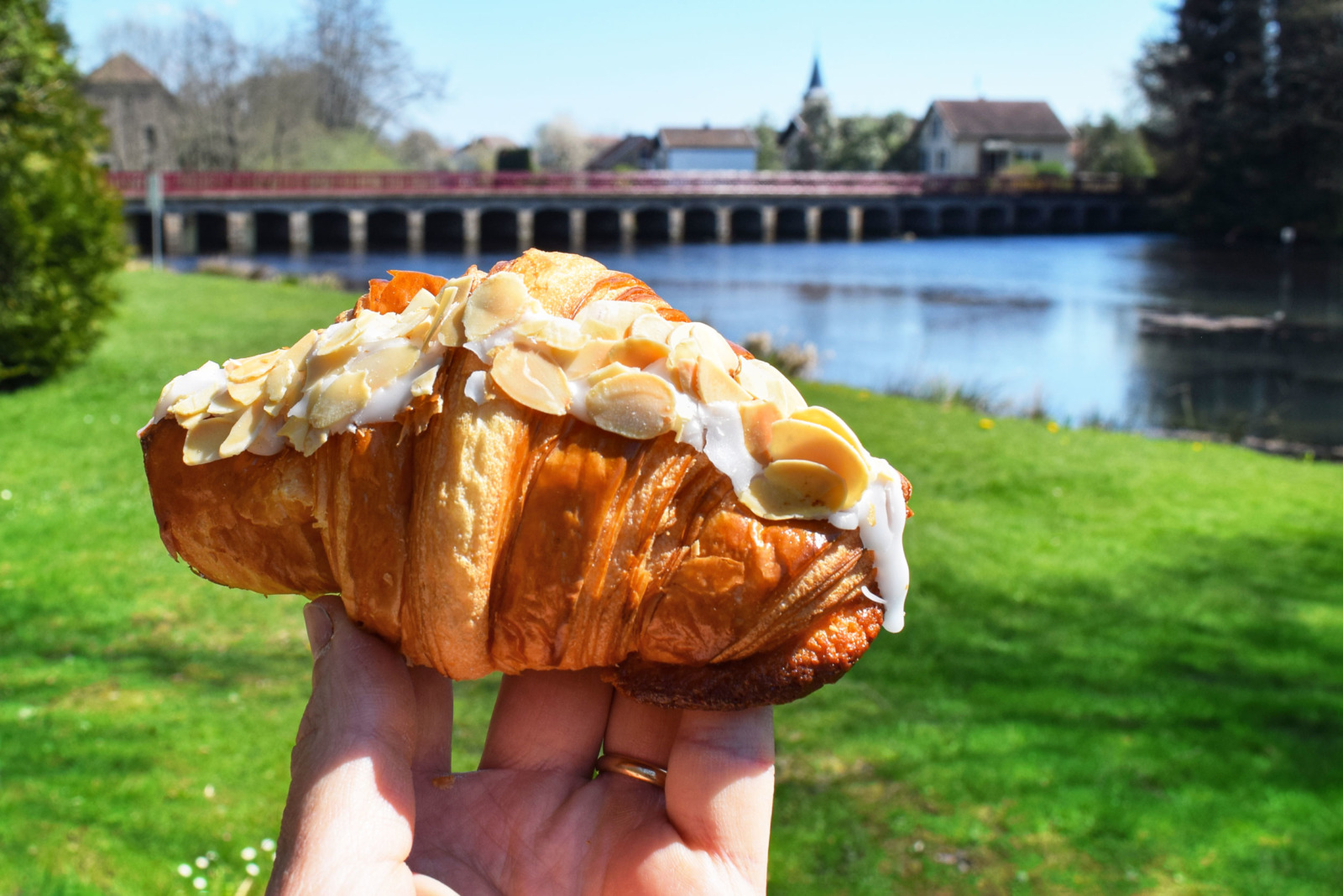
We hope this little study gave you an insight into the interesting story behind the French croissant. Next time you bite into one you might remember that it has French, Austrian and Turkish origins: quelle histoire!
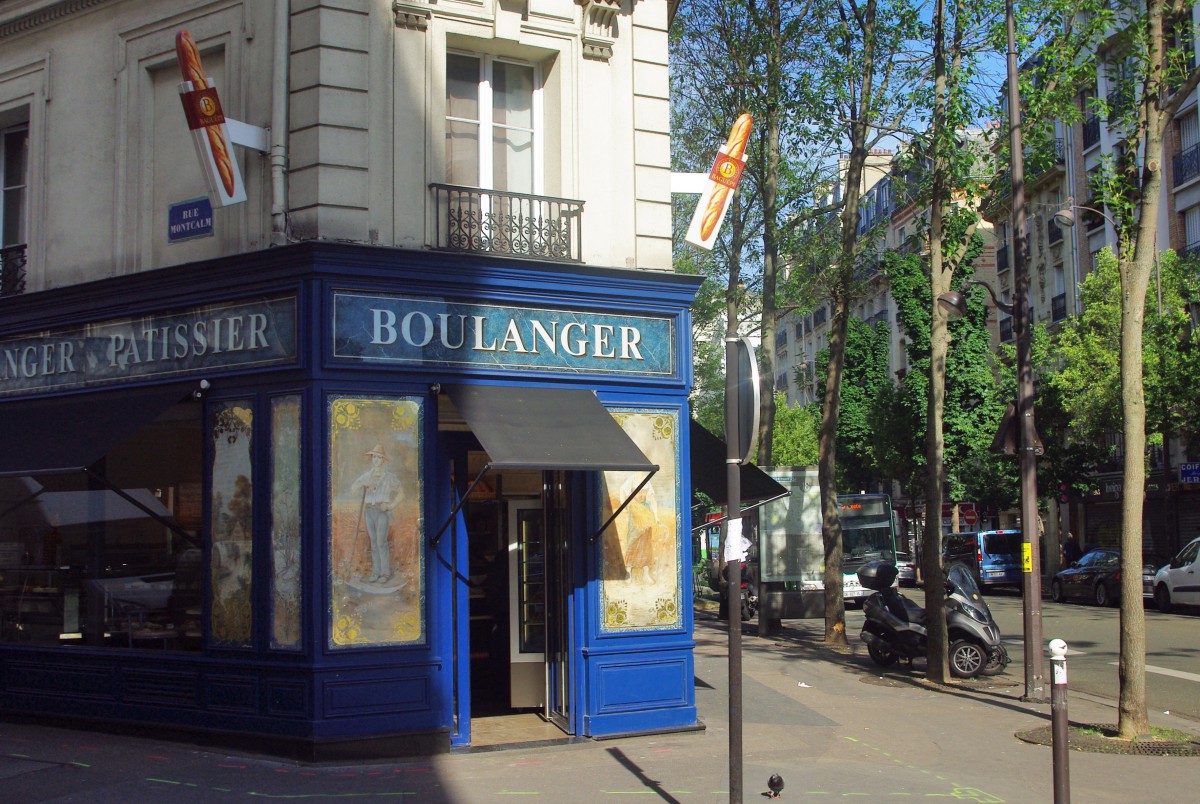
Fun facts about the croissant in France
The croissant is an integral part of French culture. For the majority of French people, eating them is a real moment of pleasure, even of sharing and conviviality. Nowadays, this love of the croissant in France is intact and is passed on to the younger generation.
General statistics on French croissants
- The croissant is the first viennoiserie consumed by the French, just before the pain au chocolat.
- In France, the croissant is eaten by 3 out of 4 French people and even more so in homes with children and among workers.
- The croissant is the second favourite viennoiserie of the French (33%), behind pain au chocolat (43%) and before pain aux raisins (11%).
- Industrial-making represents 70% of the national production of viennoiserie.
- Each year, the market for industrial viennoiseries takes 1% of the market share of artisanal bakeries and pastry shops.
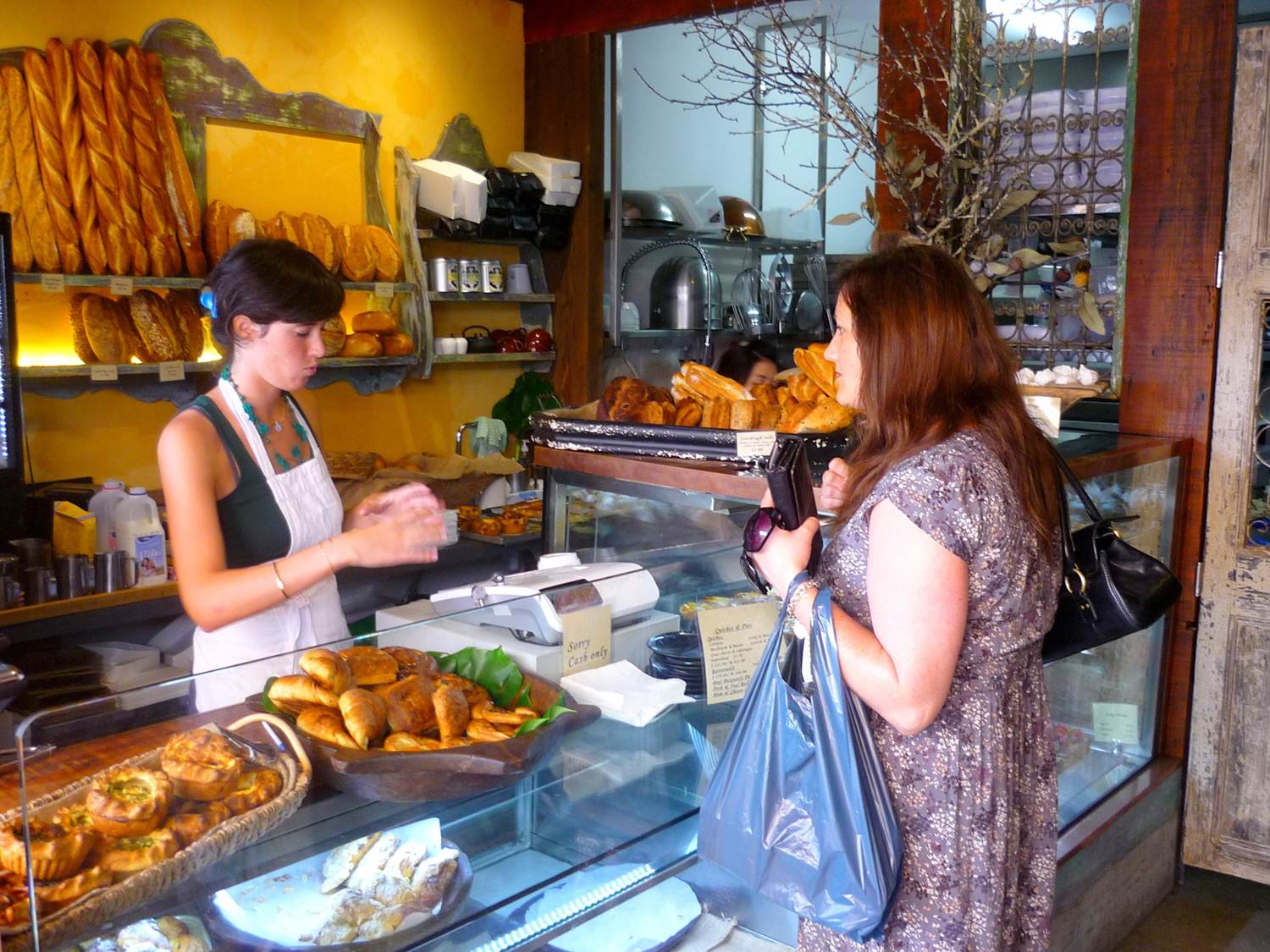
How much does a croissant in France cost?
The purchase price of a croissant in France depends on several factors.
- Industrial croissants from France sold in supermarkets have lower prices (less than 80 cents).
- In bakeries, pure butter croissants can cost up to 2 euros.
- The ideal price for a croissant bought in a bakery is, according to croissant buyers, €1.08.
What are the criteria for buying French croissants in a bakery?
According to a recent survey, the French purchase croissants for:
- their taste (74%)
- their freshness (66%)
- the crispy aspect (47%)
- the fact that it is pure butter (44%)
- the price (35%)
- the smell (32%)
- the texture of the interior (26%)
- the fact that the ingredients are natural (23%)
- the colour (13%)
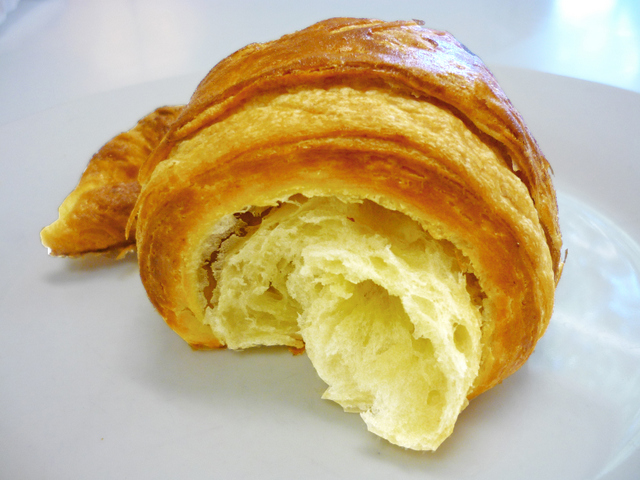
When do the French eat their croissant?
The best time to eat croissants bought in bakeries is in the morning and at weekends.
- 88% of the French buy and eat croissants in the morning.
- 22% of the French buy croissants and eat them in the afternoon at snack time (le goûter).
- 12% eat them at another time of the day.

On average, the French eat their croissant:
- 1.7 times a week.
- or 3.3 times a month.
If you would like more statistics on the consumption of croissants in France, visit this link.
The French croissant on the international scene
In the United States, the success of the croissant from France is undeniable. It arrived in the 1980s thanks to the famous American company Sara Lee. The French croissant became a cult product until it became a national day, celebrated on January 30th.
And the French croissant has not finished its expansion. In 2018, 138 million Americans consumed it, and an estimated 142 million in 2020, according to the polling institute The Statistical Portal.
In Asia too, French-style boulangeries are multiplying. Japan, South Korea and China are among the countries most fond of viennoiseries. For example, Frenchman Eric Kayser has invested in 120 shops abroad, where he offers “home-made” creations, such as green tea croissants in Japan, or almond croissants in the United States.
What’s the difference between good and bad croissants?
Visiting France is not a guarantee that you will be savouring a traditional fresh croissant!
In a study published in 2008, it was estimated that 30–40% of the croissants sold in French bakeries were baked from frozen dough. This number was expected in the following years to reach 50% at least.
Worse, this baker from Nice (see video below) declared in 2018 that “80% of the pastries on the market are of industrial origin. In the land of gastronomy, this is shameful”.
Today, the French baker continues to fight to save the French croissant and campaigns to create a homemade croissant label.
Good Bread and bad croissant?
Another pitfall: boulangeries that sell the best baguettes are not necessarily selling the best croissants either (as they have to focus on the quality of their bread at the expense of viennoiseries). And vice-versa. Sacré bleu!
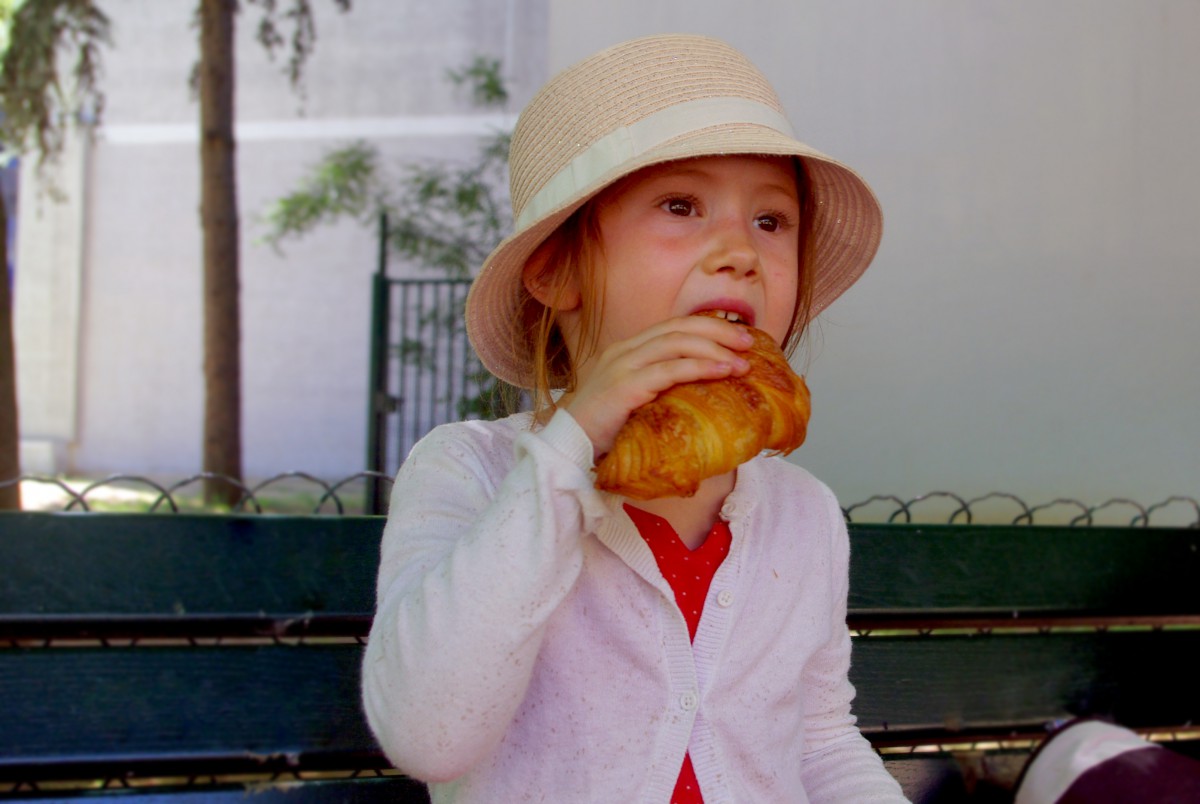
How to recognise a good old-fresh French croissant?
Well, I’m not really an expert in croissants to help you in that one. However, there is a great article on FrenchGuyCooking.com which tells you what you should expect when tasting a quality croissant. Some of their tips include:
- the croissant has an aroma of caramelised butter
- the inside is puffed up whilst the outside is crispy and golden.
- biting into a genuine pur-beurre croissant makes a mess
One day in May 2015 I was walking by Notre-Dame when I stumbled upon the Paris Festival of Bread. Under the marquee the best boulangers (bakers) were at work, baking bread and croissants. Here you could tell that they were making the real stuff, have a look:
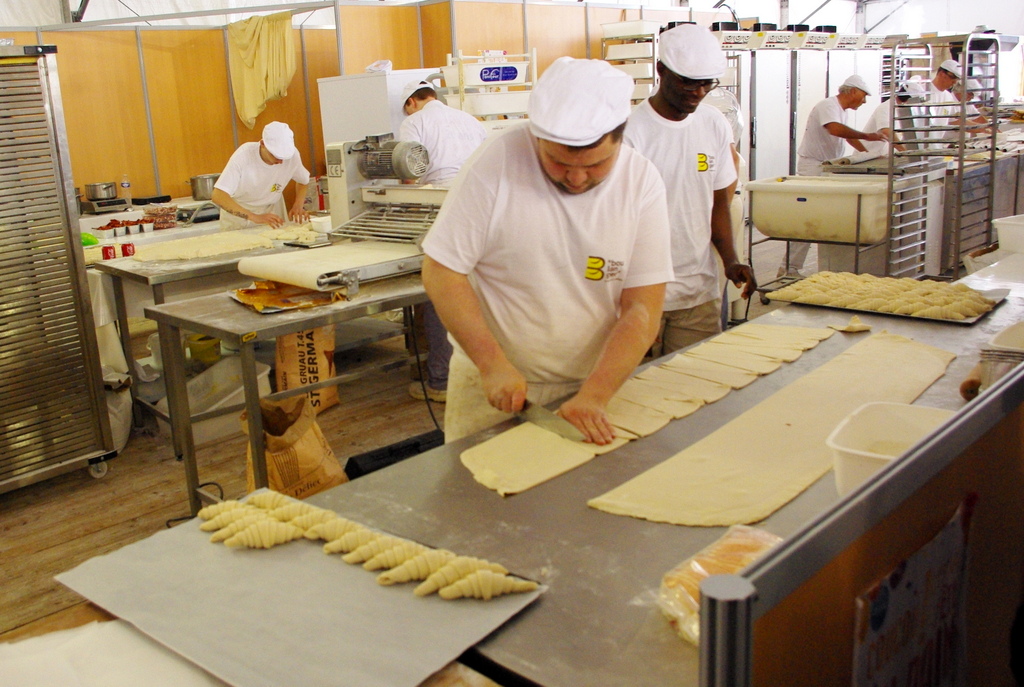
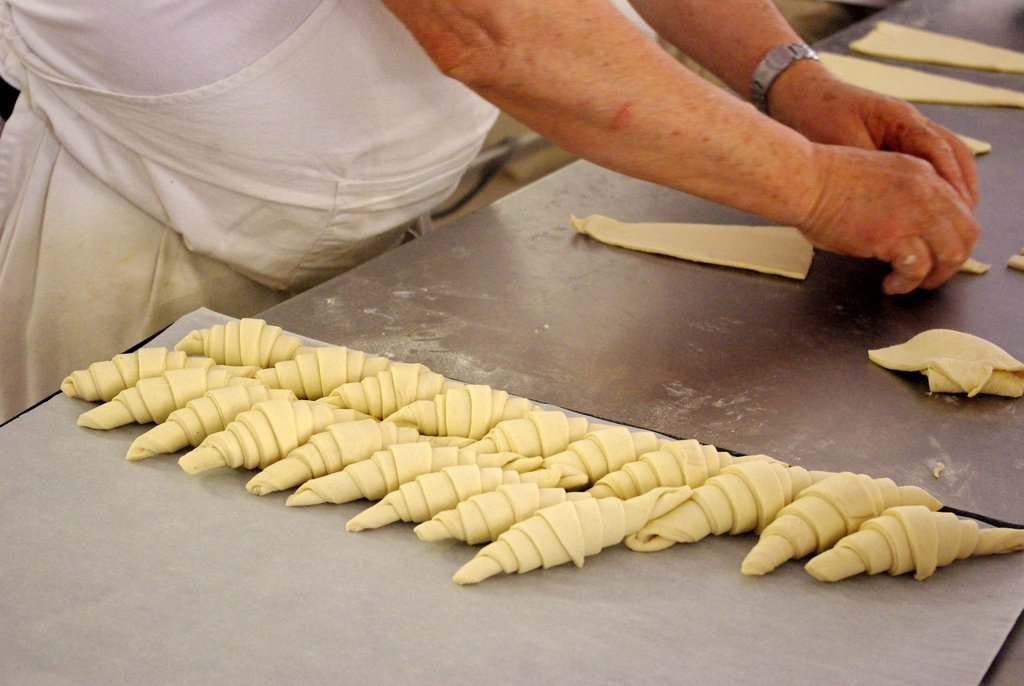
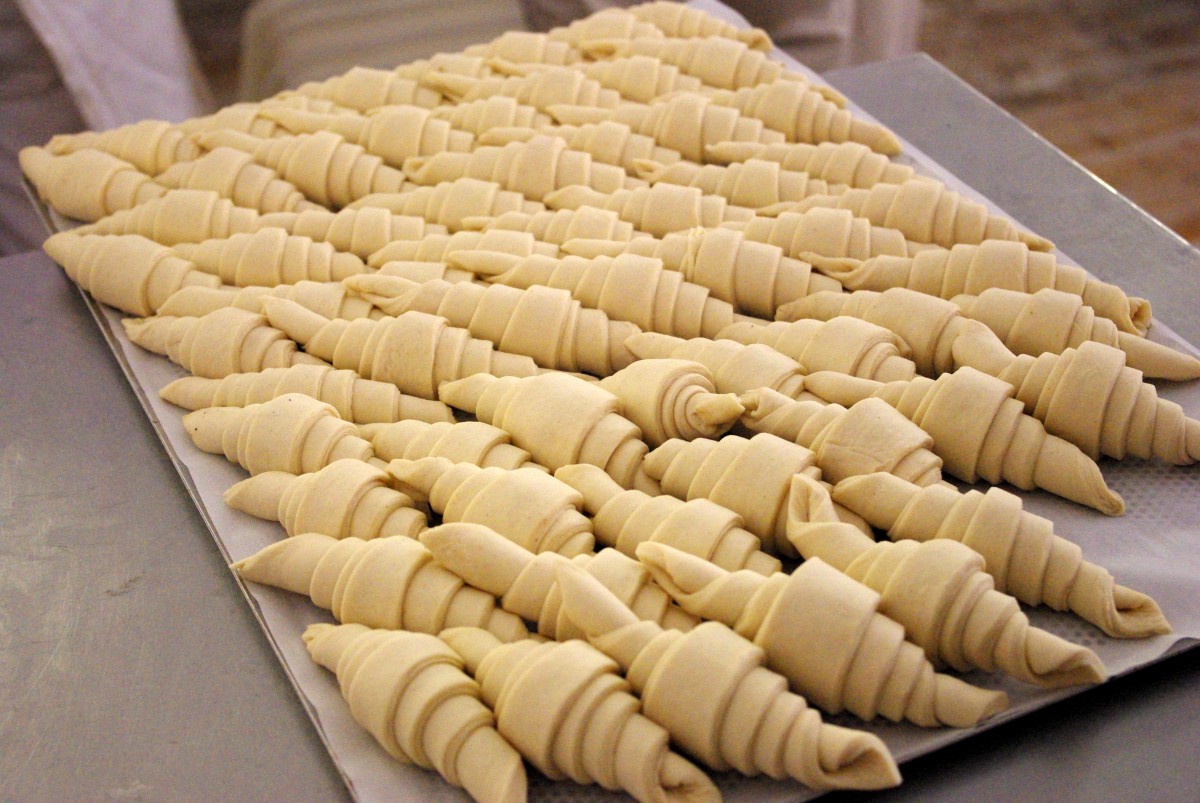
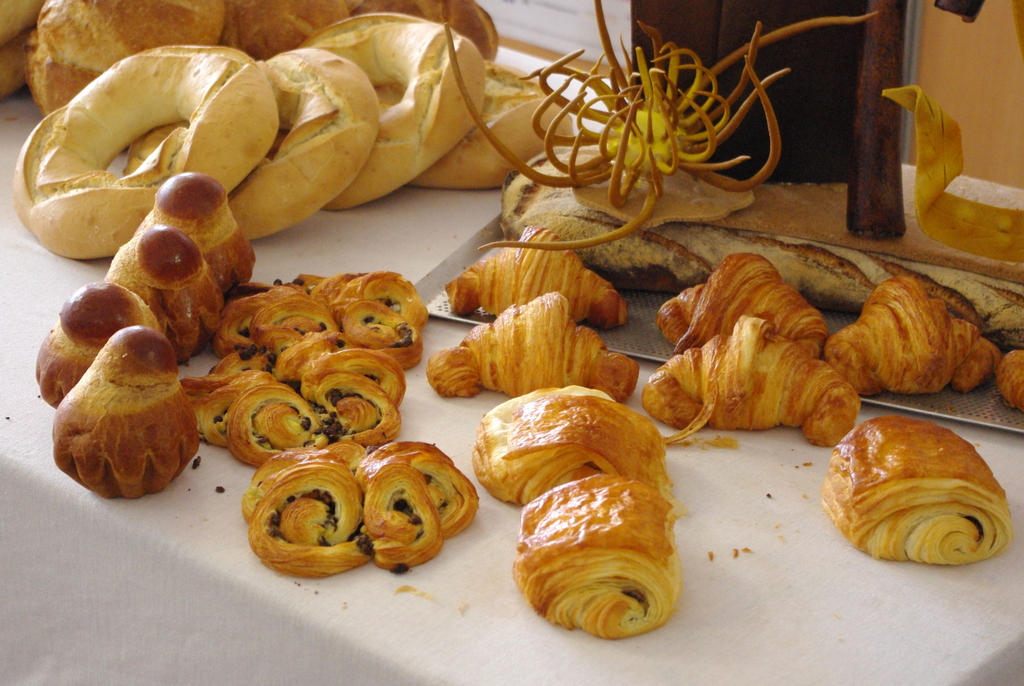
More photos of the event in my other article about “Fête du Pain 2015” in Paris.
The French croissant recipe
In France, the croissant au beurre has been made since the 1920s with puff pastry dough, like the pain au chocolat.
The mixture of flour, sugar, butter, yeast and water is kneaded, then divided into several pieces of dough, before letting it rest. The croissants are then shaped and baked at 180°C for about fifteen minutes.
There are several French croissant recipes on the Internet, including tutorials on Youtube. I personally have not (yet) tested them.
Where to find the 10 best French croissants in Paris

This list was established by the Time Out Paris team on pure butter croissants (pur beurre). They assessed the croissants on criteria such as their appearance (browned and cooked through), their puff pastry and their taste. Find out more about the rank here.
- Des gâteaux et du pain – 63 boulevard Pasteur, 15th arrondissement + 89 rue du Bac, 7th arrt.
- Du pain et des idées – 34 rue Yves Toudic, 10th arrt.
- Pichard – 88 rue Cambronne, 15th arrt.
- Laurent Duchêne – 2 rue Wurz, 13th arrt + 238 rue de la Convention, 15th arrt.
- Boulangerie Terroir d’Avenir – 1 rue du Nil, 2nd arrt.
- Landemaine – 123 rue Monge, 5th arrt.
- Gontran Cherrier – 22 rue Caulaincourt, 18th arrt.
- Dominique Saibron – 77 avenue du Général Leclerc, 14th arrt.
- Gérard Mulot – 76 rue de Seine, 6th arrt.
- Cyril Lignac – 55 boulevard Pasteur, 15th arrt.
What is a croissant in French?
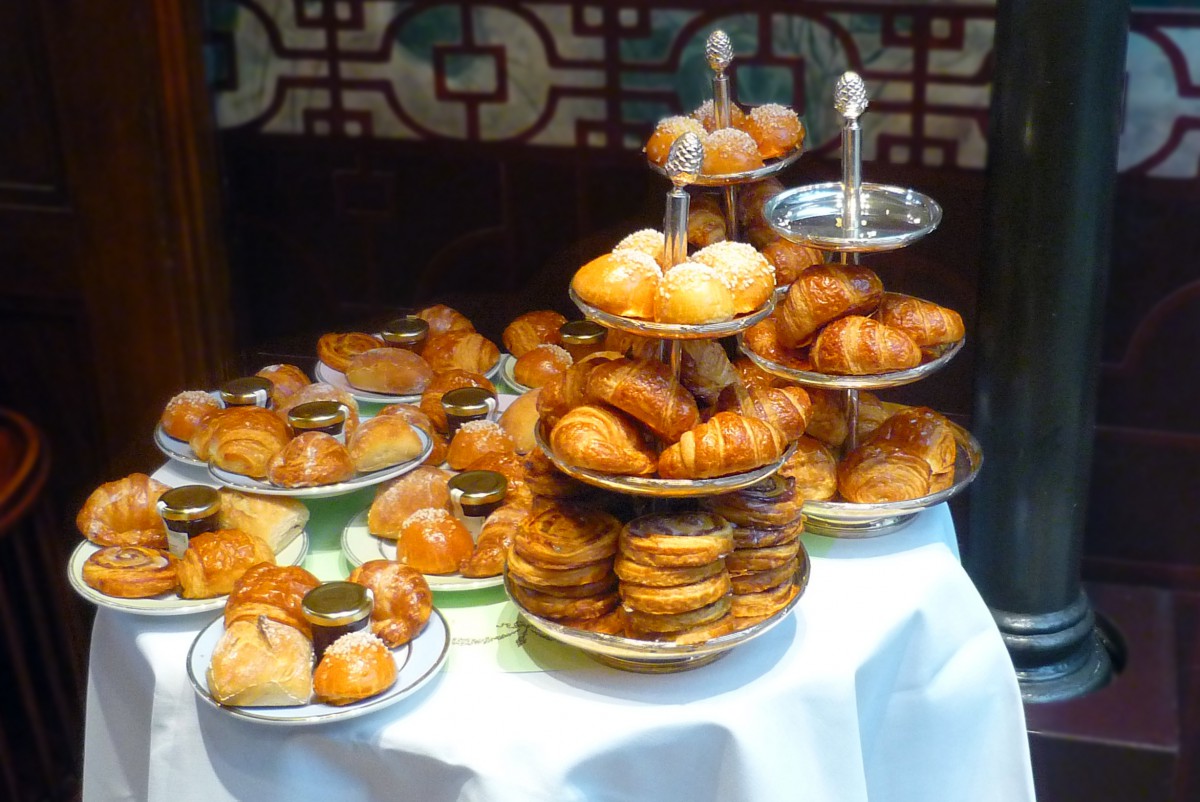
Well, a croissant in French is simply… un croissant!
Croissant: meaning of the word?
In astronomy, the crescent is relative to the phases of the moon as it moves from the new moon to the full moon.
Thus, in geometry, a crescent is used to designate a piece of disc, concave on one side and convex on the other. Hence the representation of the crescent is used as a symbol of Islam.
The word derives from Old French creissant, which in turn comes from Latin crēscēns, present active participle of crēscō (to arise, to thrive).
By analogy, the name crescent (croissant in French) was given to the Viennese pastry that adopts this shape.
The first uses of French croissants in dictionaries
The term “croissant” first appeared in a French dictionary in 1863.
Littré mentioned it as follows:
“Bread roll or cake in the shape of a croissant” (Petit pain ou petit gâteau qui a la forme d’un croissant).
Shortly afterwards, in 1869, Pierre Larousse, in his Grand Dictionnaire Universel, described the croissant as a:
“bun whose shape is that of a croissant: Croissants are made with first quality flour worked with water containing beaten eggs” (petit pain dont la forme est celle d’un croissant : Les croissants se font avec de la farine de première qualité travaillée avec une eau qui contient des œufs battus).
More vocabulary about croissants in French
(f) for féminin, (m) for masculin, (adj) for adjective and (v) for verbs
- apple turnover = chausson aux pommes (f)
- almond croissant = croissant aux amandes (m)
- Austria = Autriche (f)
- baker = boulanger (m), boulangère (f)
- bakery = boulangerie (f)
- brioche dough = pâte briochée (f)
- chocolate croissant = pain au chocolat (m)
- crescent = croissant (m)
- to grow = croître (v)
- moon = lune (f)
- puff pastry = pâte feuilletée (f)
- siege = siège (f)
- Turkey = Turquie (f)
- Vienna = Vienne
- Viennese pastries = viennoiseries (f,p)
Pin it for later
Liked what you read? If so, please share it on Facebook and Twitter, or Pin it on Pinterest







Ah the iconic French croissant! So beloved; so little understood! Many people think the croissant is made of puff pastry, it is not. Although flakey like puff pastry, puff pastry contains no yeast. Croissant dough does – it is a yeast leavened dough. The difference being is that makes a croissant half bread half pastry and a ‘notoriously difficult’ dough to make. The artisanal art of croissant-making is slowly being lost with 80% of Viennoiserie in France being industrially made frozen and baked onsite. If you find a good one, enjoy it!!!
Surely you knew that the croissant wasn’t French! It comes from viennoiseries, which kind of hints at its origins. Trust the French to steal the best of European culture and claim it as their own.
This is silly. The Viennese got it from somewhere else, and those people also got it from somewhere else. It came to France, then they developed their version of it. The croissant as is is French.
A local baker makes a ‘real’ chocolate croissant and her baguettes are as good as the best I’ve eaten in Paris… Newcastle Australia… just saying:)
Wow thank you Bernadette! That’s very good to know. Next time we visit the Central Coast we will make the trip to Newcastle! Have a lovely weekend. Pierre
Pierre,
Great article and très intéressant.
J’habite à Brisbane et on peut acheter des croissants au chocolat ici.
Je suis allée au festival du pain à Paris l’année dernière.
Merci beaucoup Debra! Mais c’est formidable d’avoir de bons croissants au chocolat (ou pains au chocolat ?) Quand j’habitais dans la Sunshine Coast, nous avions notre boulangerie française préférée à Peregian Beach, c’était très sympa (surtout le café !). A bientôt et bon weekend. Pierre
Adelaide – des croissants super – a gentleman from Marseille at La Cannelle – Magill Rd – as good as anywhere and better than most in France.
Thank you Andy for this tip! Yes sometimes hand-made croissants (even if made as far as in Oz) can be much better than pre-made ones in French boulangeries!
After years of searching,.we have found wonderful croissants in NYC at a new boulangerie called Aux Merveilleux de Fred. in Greenwich Village Now, if we could just find someone who can make a great chausson aux pommes!
That’s awesome news Joan… Now if I ever come and visit NYC, I’ll know where to go for a nice croissant! 🙂
Lidl’s croissants are as good as the 50% of Parisienne croissants that are made from frozen dough. Better than anything you can get elsewhere in the DC area, that’s for sure.
Yes, I do agree with you! It’s so disappointing when you’re looking for a good real croissant and are served an “industrial” one. This is a problem found in many parts of France and it takes a lot of work (and chance!) to find an authentic baker! 🙂
Pierre, thank you for this informative article. I am curious though, I have been trying to research the origins of the ham & Gruyere croissant for a while now with no success. I believe it is an Americanized creation but cannot confirm this. Also, I think it is sacrilege when a croissant is sliced in half then these items are added later,
Any information you have about this particular croissant would be greatly appreciated. Thank you again for the very informative article.
Hello Craig! The ham and cheese croissant was a great classic in the French delicatessens of yesteryear. It is served with strips of ham and usually a béchamel sauce and grated cheese.
This type of savoury croissant has fallen out of fashion in France until recently. In the meantime, New World countries (USA, Canada, Australia) have taken over with high-calorie and (in my opinion) not very tasty because they are too fatty!
The ham and cheese croissant is coming back to France and is increasingly available in local bakeries and butcher shops. I hope this helps! 🙂